[Editor’s Note: Mad Scientist Laboratory is pleased to publish today’s post by guest blogger Chris Kramer, advocating for a whole-of-government approach to re-invigorate and build resiliency into our national Science and Technology (S&T) infrastructure and human capital. His prescription consists of eight actions designed to better prepare the United States population and Department of Defense for Competition and Conflict in the future — Read on!]
 The weakest link in a chain determines the chain’s strength. Right now the weakest links in the extended American chain of national defense capabilities are not its physical weapons of war. They are its diminishing numbers of students pursuing STEM degrees.1 We must put as much energy into preparing our minds and our culture as we are into so energetically modernizing our weapons and equipment.
The weakest link in a chain determines the chain’s strength. Right now the weakest links in the extended American chain of national defense capabilities are not its physical weapons of war. They are its diminishing numbers of students pursuing STEM degrees.1 We must put as much energy into preparing our minds and our culture as we are into so energetically modernizing our weapons and equipment.
Edison did not invent the modern light bulb over breakfast one morning following a breathtaking single insight into the interplay of matter and electricity. The technologies all around us, from light bulbs to communications and sensors to computing, biological, and materials science, all required massive amounts of time and effort to reach their current state. They required people with the intellectual depth and breadth to design and build them. All of this took time, money, and much intellectual effort.
We all know people with “the knack” for fixing or building things. Designing a better hammer or screwdriver takes a certain amount of innate skill and practical experience, but one does not necessarily need to attend higher education to create or perfect such relatively simple items, just a fortuitous inborn strength in the capacity to visualize engineering at the practical level and the ability to translate that vision into a hand-held reality.
 One does need copious amounts of specialized higher education and training in Science and Technology (S&T) to design and build advanced equipment and realize technological innovation, however. This requirement will only increase as we continue to gain new knowledge about how to make matter and energy do our bidding and how to harness “quantum” in all its various applications.
One does need copious amounts of specialized higher education and training in Science and Technology (S&T) to design and build advanced equipment and realize technological innovation, however. This requirement will only increase as we continue to gain new knowledge about how to make matter and energy do our bidding and how to harness “quantum” in all its various applications.
One also needs this higher education and training in order to cross increasingly higher thresholds of understanding and insight in the fields we need to pursue. As people rise from students to seasoned practitioners, and continue their research and professional development, they will continue to more rapidly and thoroughly intuitively integrate the masses of knowledge and experience they and their peers have accrued. They will use this intellectual gestalt to make deeper and more penetrating insights into their own and possibly other fields. These insights will lead to ever deeper penetrations into the potential of S&T and will result in ever more advanced technologies and the applications of those technologies. Facilitating this paradigm on scales both broad and deep must be a national focus area if we are to maintain our strength and security across all the elements of national power.
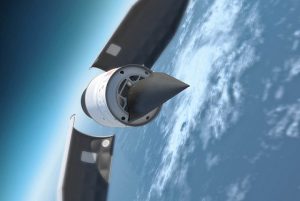 No other activity in human history except the pursuit of science has led to actual advances, and many advances were in support of the security of a tribe or nation. Note that science includes not only advancements in the hardware and software of implements for both destruction and deterrence, but also the sciences of diplomacy, economics, political and military affairs, and indeed every other endeavor that affects or informs the dynamics of human life and group interaction.
No other activity in human history except the pursuit of science has led to actual advances, and many advances were in support of the security of a tribe or nation. Note that science includes not only advancements in the hardware and software of implements for both destruction and deterrence, but also the sciences of diplomacy, economics, political and military affairs, and indeed every other endeavor that affects or informs the dynamics of human life and group interaction.
 The last time our nation awoke to the national significance of STEM was in 4 October 1957, when the Soviet Union launched Sputnik 1 and the collective American heart stopped. Rightly seeing this as a leading indicator of a potential existential threat to America,
The last time our nation awoke to the national significance of STEM was in 4 October 1957, when the Soviet Union launched Sputnik 1 and the collective American heart stopped. Rightly seeing this as a leading indicator of a potential existential threat to America, the U.S. went into a frenzy of scientific revivalism. This flurry of activity and resourcing led to a massive improvement in the national S&T infrastructure and capability, and uncountable technological spinoffs from the space and other programs which benefited human well-being and improved our defense capabilities.
the U.S. went into a frenzy of scientific revivalism. This flurry of activity and resourcing led to a massive improvement in the national S&T infrastructure and capability, and uncountable technological spinoffs from the space and other programs which benefited human well-being and improved our defense capabilities.
Science and history prove that keeping ahead of the competition is essential to individual and group survival. Our adversaries have inspected both our vulnerabilities and our strengths and are designing, building, and applying hybrid strategies and capabilities to exploit the former, while avoiding the latter. The Operational Environment is now ubiquitous and our adversaries’ work is often unseen. No longer is a war fought “in faraway places against people of which we know nothing,” to modify Neville Chamberlain’s quote from 1938; the fight is here. 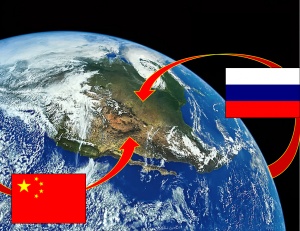 Battle lines are no longer linear and on foreign soil; our adversaries operate in the light of day through cyber lines of communication and are even now reaching into governments, businesses, homes, and devices right here in our homeland. Smart bombs can attack single buildings, but weaponized information can facilitate personalized warfare, precisely targeting specific devices and attacking individual brains.
Battle lines are no longer linear and on foreign soil; our adversaries operate in the light of day through cyber lines of communication and are even now reaching into governments, businesses, homes, and devices right here in our homeland. Smart bombs can attack single buildings, but weaponized information can facilitate personalized warfare, precisely targeting specific devices and attacking individual brains.
As has been much discussed lately, the Age of the DeepFake, in which the very nature of reality is thrown into question, is upon us.
It costs large amounts of blood and treasure to win wars, but even more to lose them.
All of the aforementioned circumstances mean that every citizen is now a de facto combatant, no matter how unwelcome this thought may be. Consequently:
– Every citizen must begin to think and respond like a combatant.
– Every citizen must be a sensor, able to apply critical thinking and scientifically-informed education and rationalism to their daily lives and to the information they encounter.
With the proliferation of potential threats and attacks facing the average citizen, we as a nation need to be brought to a baseline of competence in science, rationalism, critical thinking, and frankly an understanding that we now exist in a time and place in which individual action and inaction guided by misinformation can harm large numbers of people and resources.

Adaptation is critical to survival. Failure to adapt means losing one’s place in the hierarchy, assimilating into someone else’s culture, or going extinct. History shows that no empire or nation is immune to the corrosive effects of insular thinking, hubris, and the failure to adapt. All of the empires throughout history upon which “the sun never set” have seen their power and reach shrink or vanish. If we wish to avoid this, we must adapt our weapons of war, our human capital, and our society at the same time. And we must do it quickly, because “the rate of change of the rate of change” and the capabilities and approaches used by our adversaries are increasing in scope and reach.
Here are eight actions we should take:
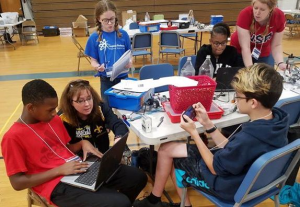 1. Aggressively identify and groom high-achieving/high-potential students while they are in middle and high school. Facilitate their movement into higher education, and then on into the professional or academic worlds. Have them be the foundation for the next great generation of (government?) scientists and engineers. Some of these people will be born in extremely depressed socioeconomic areas; we must leverage the schools and communities across the nation to identify these students as well.
1. Aggressively identify and groom high-achieving/high-potential students while they are in middle and high school. Facilitate their movement into higher education, and then on into the professional or academic worlds. Have them be the foundation for the next great generation of (government?) scientists and engineers. Some of these people will be born in extremely depressed socioeconomic areas; we must leverage the schools and communities across the nation to identify these students as well.
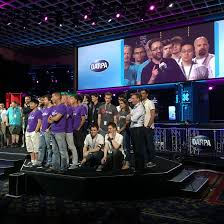 2. Once onboard and contributing, reward and recognize these people in public for their work and contributions. Work to make intellectual achievement as publicly desirable as possible. Our future S&T and cyber warriors are going to help us win these fights, especially when the field of battle has now been extended through virtual tentacles into our own homes.
2. Once onboard and contributing, reward and recognize these people in public for their work and contributions. Work to make intellectual achievement as publicly desirable as possible. Our future S&T and cyber warriors are going to help us win these fights, especially when the field of battle has now been extended through virtual tentacles into our own homes.
3. Elevate science as a national asset and a national treasure. As long as science is denied, it will be marginalized. As long as science is marginalized, it will be rejected, unfunded or inadequately funded. As long as it is not properly resourced, we will feel the harmful effects of the lack of resources.
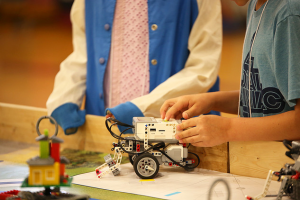 4. Every S&T professional and every S&T organization should either lead or support activities, both organized and large-scale down to individual efforts, to promote S&T and its acceptance. Do outreach with kids and local groups. Guest-lecture at schools from elementary to graduate levels. Volunteer to support local S&T and scholastic improvement events. Find people who will be the next generation of patent producers, researchers and developers, and discovers of new technologies and new solutions. Bring them onto the right teams and help them to pay this forward until it is the organization’s business model.
4. Every S&T professional and every S&T organization should either lead or support activities, both organized and large-scale down to individual efforts, to promote S&T and its acceptance. Do outreach with kids and local groups. Guest-lecture at schools from elementary to graduate levels. Volunteer to support local S&T and scholastic improvement events. Find people who will be the next generation of patent producers, researchers and developers, and discovers of new technologies and new solutions. Bring them onto the right teams and help them to pay this forward until it is the organization’s business model.
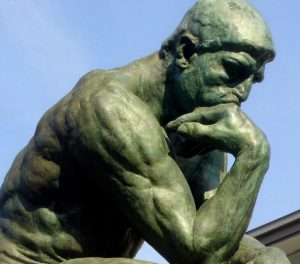 5. Work with the Department of Education and school boards to introduce critical thinking as a stand-alone skill and subject, introduced no later than the middle school years, then fold it into all subsequent student evaluation.
5. Work with the Department of Education and school boards to introduce critical thinking as a stand-alone skill and subject, introduced no later than the middle school years, then fold it into all subsequent student evaluation.
6. Require objective peer-reviewed science be the deciding factor in all government decisions.
7. Implement the research that has already been done on these topics. Five minutes of research showed there is sufficient work2 already done3 on the STEM education issue to get a great start.
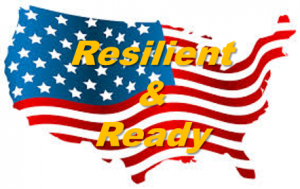 8. Finally, have DoD work with the federal, state, and local governments to identify the threats and the actions all citizens need to take to be part of the collective national defense, then educate the population on them and hold periodic drills to ensure horizontal and vertical readiness.
8. Finally, have DoD work with the federal, state, and local governments to identify the threats and the actions all citizens need to take to be part of the collective national defense, then educate the population on them and hold periodic drills to ensure horizontal and vertical readiness.
If you enjoyed this post…
- Learn how Finland has implemented a whole-of-government approach to counter weaponized information in:
– Why Is Finland Able to Fend Off Putin’s Information War?
– Russia’s Neighbor Finland Mounts Defenses Against Election Meddling
- See the following MadSci blog posts:
– Four Elements for Future Innovation, by Dr. Richard Nabors
– The Trouble with Talent: Why We’re Struggling to Recruit and Retain Our Workforce, by Sarah L. Sladek
– Making the Future More Personal: The Oft-Forgotten Human Driver in Future’s Analysis, by Ian Sullivan
Chris Kramer is a retired Army engineer officer and futurist working to further the advancement of science, technology and critical thinking. The perspectives described in this article are the author’s and do not imply endorsement by any person or organization within the U.S. Government.
1 Pew Research Center information regarding American student aversion to STEM, dated January 17, 2018, at https://www.pewresearch.org/fact-tank/2018/01/17/half-of-americans-think-young-people-dont-pursue-stem-because-it-is-too-hard/
2 National Academies of Sciences, Engineering, and Medicine. (2016). Barriers and Opportunities for 2-Year and 4-Year STEM Degrees: Systemic Change to Support Diverse Student Pathways. Committee on Barriers and Opportunities in Completing 2-Year and 4-Year STEM Degrees. S. Malcom and M. Feder, Editors. Board on Science Education, Division of Behavioral and Social Sciences and Education. Board on Higher Education and the Workforce, Policy and Global Affairs. Washington, DC: The National Academies Press. doi: 10.17226/21739. Found at https://www.nap.edu/read/21739/chapter/1
3 Report by the Committee On STEM Education of the National Science & Technology Council, Dated December 2018, titled “Charting A Course For Success: America’s Strategy For STEM Education”. Found at https://www.whitehouse.gov/wp-content/uploads/2018/12/STEM-Education-Strategic-Plan-2018.pdf

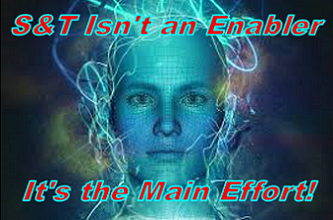


Excellent perspective Chris! The Whole of Government / National approach requires greater participation of the general population in security objectives. This also increases mutual trust between citizens and the government that serves in their best interests. STEM is a clear example of mutual investment towards the greater good – notably the 1960s space program that you mentioned. This requires a substantial investment in government funding, and equal support and dedication by the general population.